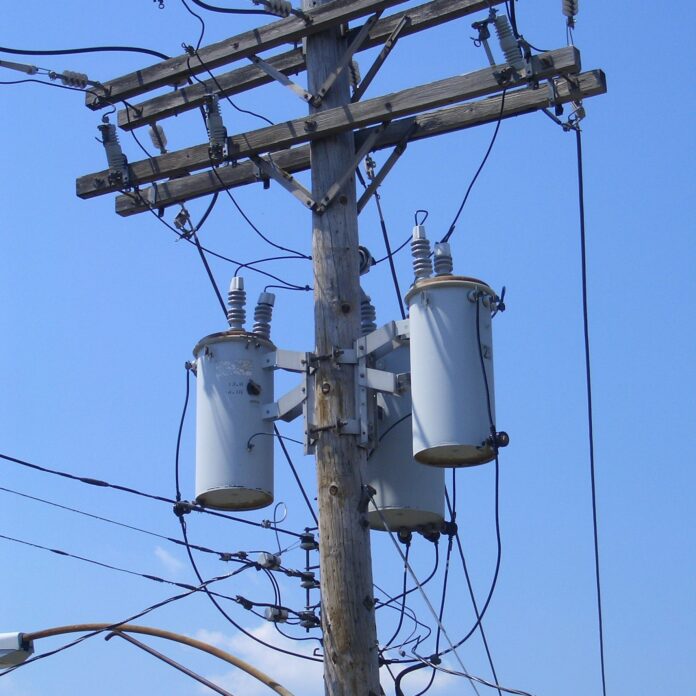The internet is now the “reason for being” for most wireless and wireline service providers. Indeed, wireless and wireline networks are becoming the internet (homage to Eric Schmidt’s original vision of the network becoming the computer). These broadband networks are increasingly looking and working less like “telecom” networks and more like wide-area IT networks as switches give way to routers and lots and lots of “things” get connected to them. And, of course, none of the internet infrastructure works if it is not powered, which calls to mind yet another critical but distinct network – the power distribution infrastructure of the power utility. Despite being regulated by the same PUC commissioners, planning between and among carriers and power utilities is pretty much non-existent. Their network planning sessions are disconnected, parallel discussions that need to be more integrated if we are to ensure that the Internet is always powered on.
Network power
As best I can tell from my questions to telecom network planners, power is left out of the process primarily because it is simply taken for granted. The power utility will be there with a power line, eventually. Also driving the de-prioritization of power in network planning discussions is a huge misconception in telecom today regarding backup power. It goes like this: we were required by regulators in the past to have resilient power in our network because our voice product was regulated. Because voice is now delivered as a less regulated data application over broadband networks, resilient power is no longer a regulatory requirement. The result is that power is increasingly an afterthought and backup power may be overlooked altogether.
Society is in the process of building what is arguably the most important communications and innovation platform in human history (the internet). One major power outage could render much of it worthless for an extended period of time. We have seen in the past couple months the impacts of power outages on the nation’s largest airline and the public transit systems in New York City and San Francisco. The root cause of these issues was a commercial power outage, but the problems were amplified by a lack of planning and processes for an outage scenario. Leaving power out of the planning process is a significant oversight. Many of the largest carriers in the world have only recently realized just how much they are spending to power their networks. The significance of these expenditures will draw some executive attention to power. But because power is such an afterthought and there is no one at the table insisting that it be prioritized, the network planner’s approach to back-up power is often rushed and not as well thought out as it should be, if it is considered at all. As more and more critical infrastructure gets connected to the internet, society and industry cannot afford to leave power-related planning to the last minute. It needs to be a priority.
To insist on paying more attention to power is not to suggest that wholesale change is needed. The local power utility is still a very dependable source of inexpensive network power in most places. Generators and batteries are still dependable sources of backup power. But there is so much innovation in the power domain today that network planners will be negligent if they do not look more closely at it. Renewables have made their way down the cost curve as a viable source of alternative power, especially in areas where the power grid is scarce. Battery manufacturers are now rolling out improved battery chemistries designed to address harsh environmental conditions. These batteries are often enhanced with electronic battery management systems (BMS) that automate some of the more mundane (but expensive) aspects of battery maintenance such as testing and monitoring, which often make batteries a sore subject for carriers. These BMSs pay for themselves by enhancing battery life and performance and by reducing operating expenses associated with battery maintenance. But they do more than that. They provide insight into the status of the power infrastructure supporting the internet of things. If some wireless carriers invest in this resilience while others don’t, it will become a differentiator in a world where everything is connected to the internet. And some are already in better positions than others when it comes to backup power.
The internet of things includes batteries
I have explained to investors and customers that it is an irony that most of the elements that make up the infrastructure of the internet are not themselves connected to the internet. A wireline carrier’s DSLAM equipment actually enables broadband service, but most likely is not itself connected to the internet (or to an intranet) in any way at most carriers. The same is true for enabling network elements in most wireless and cable networks. Power equipment in carrier networks, much of it internet-ready, is most often not connected to the internet to enable remote monitoring or management. Very little power equipment in power utility networks is connected to the internet. In all of these cases, network operators rely on customer calls to indicate an outage and pinpoint its location. Connecting these network elements to an internal LAN or private cloud is technically possible today. The hurdles may seem financial, but actually, they are cultural. If a company (or industry) culture doesn’t see value in resilient power, it doesn’t prioritize resources for it. And for those wireless carriers painted into a corner by high dividend yields and other investor demands on their cash, it may take a catastrophic event or regulatory intervention to change the culture.

